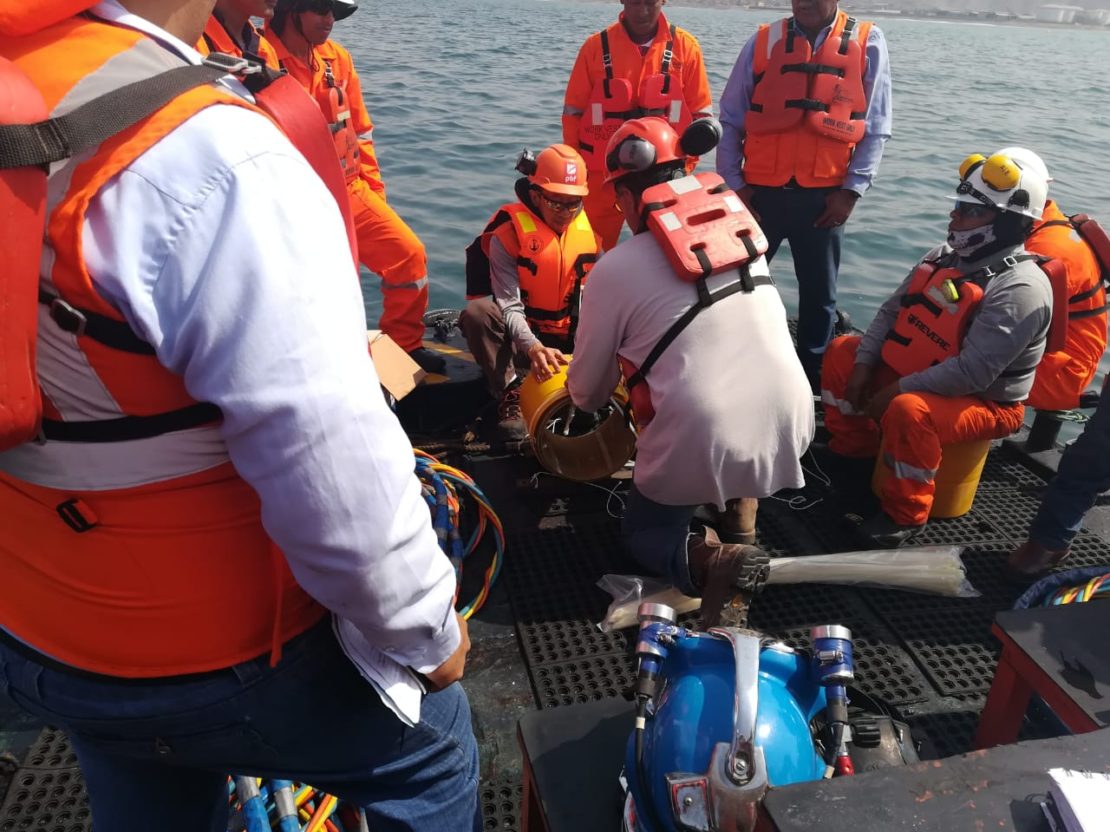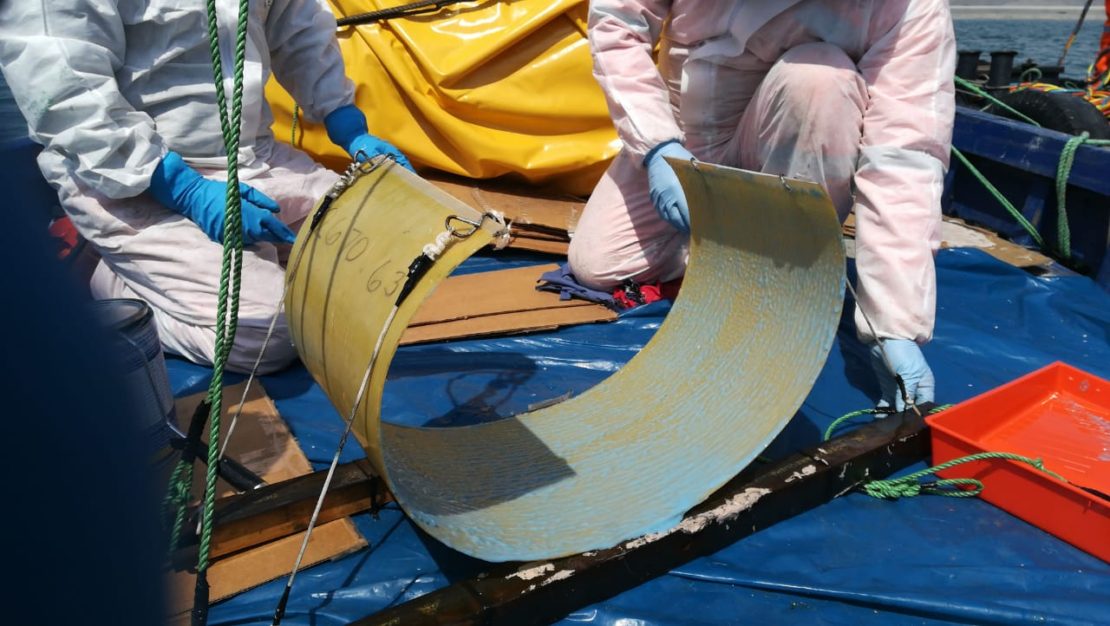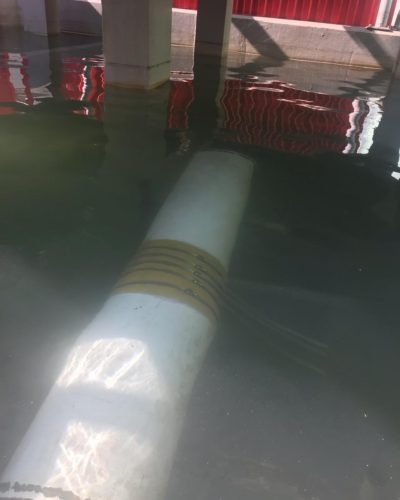Peru
Pipe Details
- A 355.6-mm (14-inch) carbon steel pipeline transporting refined product under water had sustained dents from 127 mm (5 inches) long and up to 228.6 mm (9 inches) wide (circumferential)
- 7 dents ranging from 3.10% to 9.90% deep required repair
- Installation carried out by trained divers
Summary
- A 355.6-mm (14-inch) carbon steel pipeline transporting refined product under water had sustained dents
- Snap Wrap was used to repair the dents
- 5 trained divers installed the repair, completing each installation in 2 hours
- Complete repair program was executed in a matter of days
- No hot work was required
- No negative environmental impact
- No need to completely shut down refinery operations
Line damage is not uncommon, but when the affected lines are under water and difficult to access, a common problem sometimes requires an unconventional solution.
During an inspection at one of Peru’s major terminal facilities, workers discovered that an underwater carbon steel line carrying a refined product had sustained 7 significant dents, ranging in size to 127 mm (5 inches) long and up to 228.6 mm (9 inches) wide. With the line running under water, the company wanted to address the damage as soon as possible to avoid environmental damage.
The ideal solution would be able to be installed quickly and effectively, delivering a permanent repair without introducing hot work or requiring the line to be shut in. Because of an existing relationship with CSNRI, the first reaction was to reach out to a historical partner that had delivered quality repairs in the past.


The engineering team at CSNRI evaluated the details of the line damage and designed a solution using 4 layers of the Snap Wrap composite sleeve, a multi-layered system of high-strength, corrosion-resistant fiberglass split sleeves, installed with a filler material and high-performance adhesive. These sleeves are designed for pipe repair and reinforcement and work best on pipe operating at less than 70 bar (1,000 psi). Snap Wrap is installed easily and requires no cutting or welding.
Since the repair would be carried out under water, an authorized local distributor received specialized training in Houston for the installation. Meanwhile, because the repair materials needed to be received in 2 weeks, work began immediately to prepare the required components for shipping to the work site. The logistics team managed to have the materials clear customs quickly and delivered the Snap Wrap kits to the facility so work could begin without delay.
Working from a boat, the installation team began preparations for the dive. A certified trainer worked with local divers to establish the installation protocol. Divers cleaned the damaged areas of the line to prepare them for the application of a proprietary filler material, which was used to fill each dent and then covered by a single wrap mold. Once the dents were filled and covered, the team on the boat prepared the first Snap Wrap sleeve for placement, applying the adhesive to a sleeve placed on a frame that would facilitate placement under water.
A certified local diver entered the water with each prepared sleeve and placed it on the damaged pipe, installing a 4-layer Snap Wrap repair, adjusting the sleeves for optimal placement using metal hose clamps and plastic zip ties. Following this approach, the team was able to complete each repair in approximately 2 hours, with a final cure delivered in 2.5 hours. The entire repair program was executed in just a few days.
The team comprised 5 divers and two supervisors, one who oversaw work in the water, and another who managed activities on deck. Throughout the installation, an expert technician in Houston remained in contact with the onsite team by phone to offer support and oversight to ensure the repairs were installed without incident.
Working with trusted partners allowed the company to repair its damaged lines within a week, avoiding the cost of cutting and replacing sections of the pipeline and achieving a regional “first” underwater composite repair.
The willingness to try a different approach not only delivered a reliable repair with less investment and less disruption than an alternative, it has established the viability of this installation method in Latin America.


